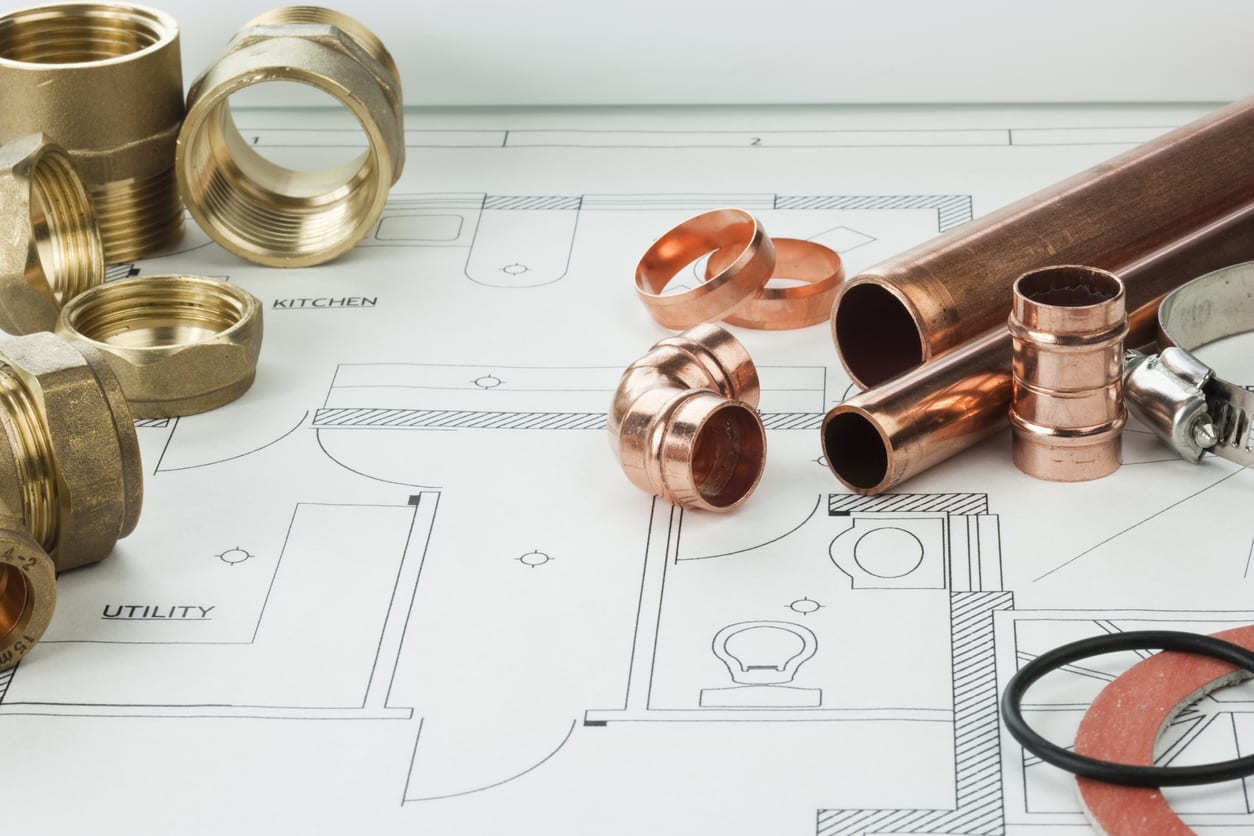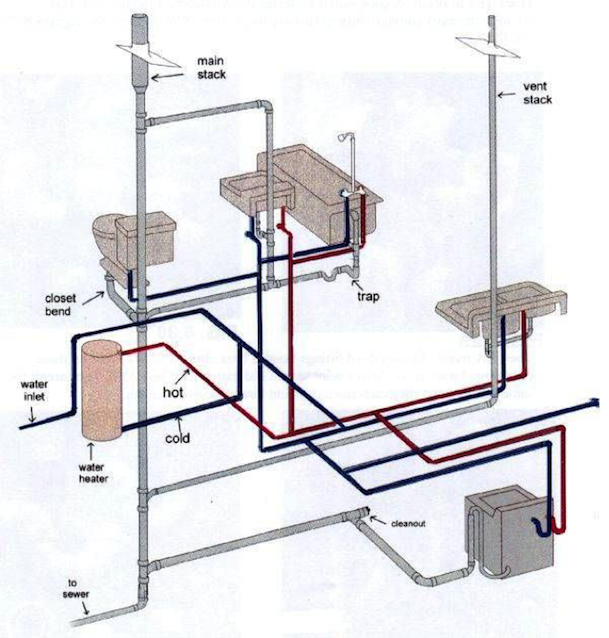The article author is making a few good pointers related to Exploring Your Homes Plumbing Anatomy overall in this article underneath.

Comprehending exactly how your home's plumbing system works is essential for every single homeowner. From supplying clean water for alcohol consumption, cooking, and showering to safely removing wastewater, a well-kept plumbing system is essential for your family members's health and wellness and convenience. In this extensive overview, we'll check out the detailed network that comprises your home's pipes and deal ideas on maintenance, upgrades, and managing usual concerns.
Introduction
Your home's pipes system is more than simply a network of pipelines; it's a complicated system that ensures you have access to clean water and effective wastewater elimination. Recognizing its parts and how they interact can aid you prevent expensive repair services and make certain every little thing runs efficiently.
Basic Components of a Plumbing System
Pipelines and Tubes
At the heart of your plumbing system are the pipes and tubing that bring water throughout your home. These can be made from numerous products such as copper, PVC, or PEX, each with its benefits in regards to resilience and cost-effectiveness.
Fixtures: Sinks, Toilets, Showers, etc.
Fixtures like sinks, commodes, showers, and tubs are where water is utilized in your home. Understanding how these fixtures connect to the plumbing system helps in diagnosing problems and planning upgrades.
Shutoffs and Shut-off Factors
Shutoffs manage the flow of water in your plumbing system. Shut-off valves are important during emergencies or when you need to make repair services, enabling you to isolate parts of the system without interrupting water flow to the entire house.
Water System
Key Water Line
The primary water line links your home to the community water supply or a private well. It's where water enters your home and is dispersed to numerous components.
Water Meter and Pressure Regulator
The water meter measures your water usage, while a pressure regulatory authority makes certain that water streams at a safe stress throughout your home's pipes system, avoiding damage to pipes and components.
Cold Water vs. Warm water Lines
Comprehending the distinction in between cold water lines, which provide water straight from the major, and warm water lines, which bring warmed water from the hot water heater, helps in repairing and preparing for upgrades.
Drain System
Drain Piping and Traps
Drain pipelines carry wastewater away from sinks, showers, and commodes to the drain or septic tank. Traps avoid drain gases from entering your home and also catch debris that might create clogs.
Air flow Pipelines
Air flow pipes allow air right into the water drainage system, stopping suction that might slow down drain and cause traps to empty. Proper air flow is crucial for keeping the honesty of your plumbing system.
Significance of Correct Drainage
Making certain correct water drainage protects against back-ups and water damage. Routinely cleansing drains and keeping traps can protect against costly repair work and extend the life of your plumbing system.
Water Heating System
Kinds Of Water Heaters
Water heaters can be tankless or standard tank-style. Tankless heating systems heat water on demand, while containers keep warmed water for immediate usage.
Upgrading Your Plumbing System
Factors for Upgrading
Upgrading to water-efficient components or replacing old pipelines can improve water high quality, lower water costs, and enhance the worth of your home.
Modern Pipes Technologies and Their Benefits
Check out modern technologies like clever leak detectors, water-saving bathrooms, and energy-efficient hot water heater that can save cash and lower environmental influence.
Cost Considerations and ROI
Compute the upfront expenses versus long-lasting financial savings when taking into consideration plumbing upgrades. Lots of upgrades pay for themselves through minimized energy expenses and fewer fixings.
Just How Water Heaters Connect to the Plumbing System
Recognizing how hot water heater link to both the cold water supply and warm water distribution lines helps in identifying concerns like inadequate hot water or leaks.
Upkeep Tips for Water Heaters
Routinely flushing your water heater to eliminate debris, checking the temperature level settings, and examining for leakages can prolong its life-span and boost energy efficiency.
Common Plumbing Issues
Leaks and Their Causes
Leakages can take place as a result of maturing pipes, loose fittings, or high water stress. Addressing leakages without delay prevents water damage and mold development.
Obstructions and Blockages
Obstructions in drains and bathrooms are typically brought on by purging non-flushable products or a build-up of grease and hair. Utilizing drain displays and being mindful of what decreases your drains can stop blockages.
Indications of Plumbing Problems to Expect
Low tide pressure, slow drains, foul odors, or unusually high water bills are signs of prospective plumbing problems that should be dealt with immediately.
Pipes Upkeep Tips
Routine Assessments and Checks
Arrange annual pipes examinations to catch concerns early. Seek indicators of leakages, corrosion, or mineral buildup in faucets and showerheads.
DIY Maintenance Tasks
Easy tasks like cleaning faucet aerators, checking for toilet leaks using dye tablets, or protecting exposed pipelines in cool climates can avoid major pipes problems.
When to Call an Expert Plumbing Technician
Know when a plumbing issue calls for expert know-how. Attempting complex fixings without correct knowledge can bring about more damage and higher fixing expenses.
Tips for Lowering Water Usage
Simple behaviors like taking care of leaks quickly, taking much shorter showers, and running full loads of laundry and meals can save water and reduced your energy expenses.
Eco-Friendly Plumbing Options
Take into consideration sustainable plumbing products like bamboo for floor covering, which is durable and environment-friendly, or recycled glass for countertops.
Emergency situation Preparedness
Steps to Take During a Plumbing Emergency situation
Know where your shut-off valves lie and how to switch off the water in case of a burst pipeline or major leak.
Value of Having Emergency Situation Get In Touches With Handy
Keep call info for neighborhood plumbing technicians or emergency situation services easily offered for quick action during a plumbing dilemma.
Ecological Effect and Preservation
Water-Saving Fixtures and Home Appliances
Installing low-flow faucets, showerheads, and commodes can considerably lower water usage without compromising efficiency.
DIY Emergency Situation Fixes (When Applicable).
Momentary fixes like utilizing air duct tape to spot a dripping pipeline or positioning a container under a trickling faucet can reduce damage till a specialist plumber gets here.
Conclusion.
Understanding the composition of your home's plumbing system encourages you to keep it effectively, saving time and money on repairs. By complying with regular maintenance routines and staying notified concerning modern-day pipes technologies, you can ensure your pipes system runs effectively for several years ahead.
HOW YOUR PLUMBING SYSTEM WORKS
Which Pipes Do What?
Blue lines = fresh water supply entering the building Red lines = hot water supply entering the building Grey lines = pipes carrying waste away from the building and venting pipes carrying gases away from the building (through the roof) YOUR MAIN PLUMBING SYSTEMS
There are two main plumbing systems that support your home s basic plumbing needs one that brings clean water into your home, and one that sends dirty water away from your home. Connected to the toilet, bath, shower, and other faucets in your home, these two systems keep your water flowing in the right directions.
ACCESSING FRESH WATER
Fresh and clean water is brought into your home through the main water supply line . Filtered through one pipe, this water is pressured to flow into the various fixtures in your home at any given time.
This water can be sourced from a well located on your property, a pond or river (mostly cottages), or, as in most cases, from the city s municipal water treatment centre. However, it is important to note that water that is untreated, such as the water siphoned from ponds or rivers, may not be safe to drink. Personal water supplies always need to be treated for hardness and contaminants before consumed.
MUNICIPAL WATER SUPPLIES
Improve taste and odour Remove sediment Eliminate hardness Reduce chlorine COLD WATER SUPPLY VS. HOT WATER SUPPLY
Cold water flows into your home or building through the service line, which then distributes hot or cold water to your fixtures. This line is most commonly run through a central column that runs floor to floor. Hot water runs in short and straight pipes as the longer the pipeline, the more heat that will be lost in the transfer. Having shorter pipes also allows residents to access hot water more quickly.
WASTE WATER SYSTEM
Your wastewater system is divided into two parts pipes that send wastewater away from your home and venting pipes that send sewer gas away from your home. Sewage water travels through pipes that flush the water and waste towards local sewers that are operated and managed by your city or town. Most sewer systems rely on gravity to move the wastewater to where it needs to go.
The further away from your toilet or sink, the larger wastewater pipes become. This allows for waste to be disposed of from various parts of your home or business at once without pipe blockages. The angle and flow of these pipes are also essential for keeping your waste pipes clear of build up.
https://harrisplumbing.ca/how-your-home-plumbing-system-works/

I ran across that review on Anatomy of a House: Understanding the Components when surfing around the internet. Enjoyed reading our blog? Please quickly share it. Help another person discover it. Many thanks for going through it.
Call Today